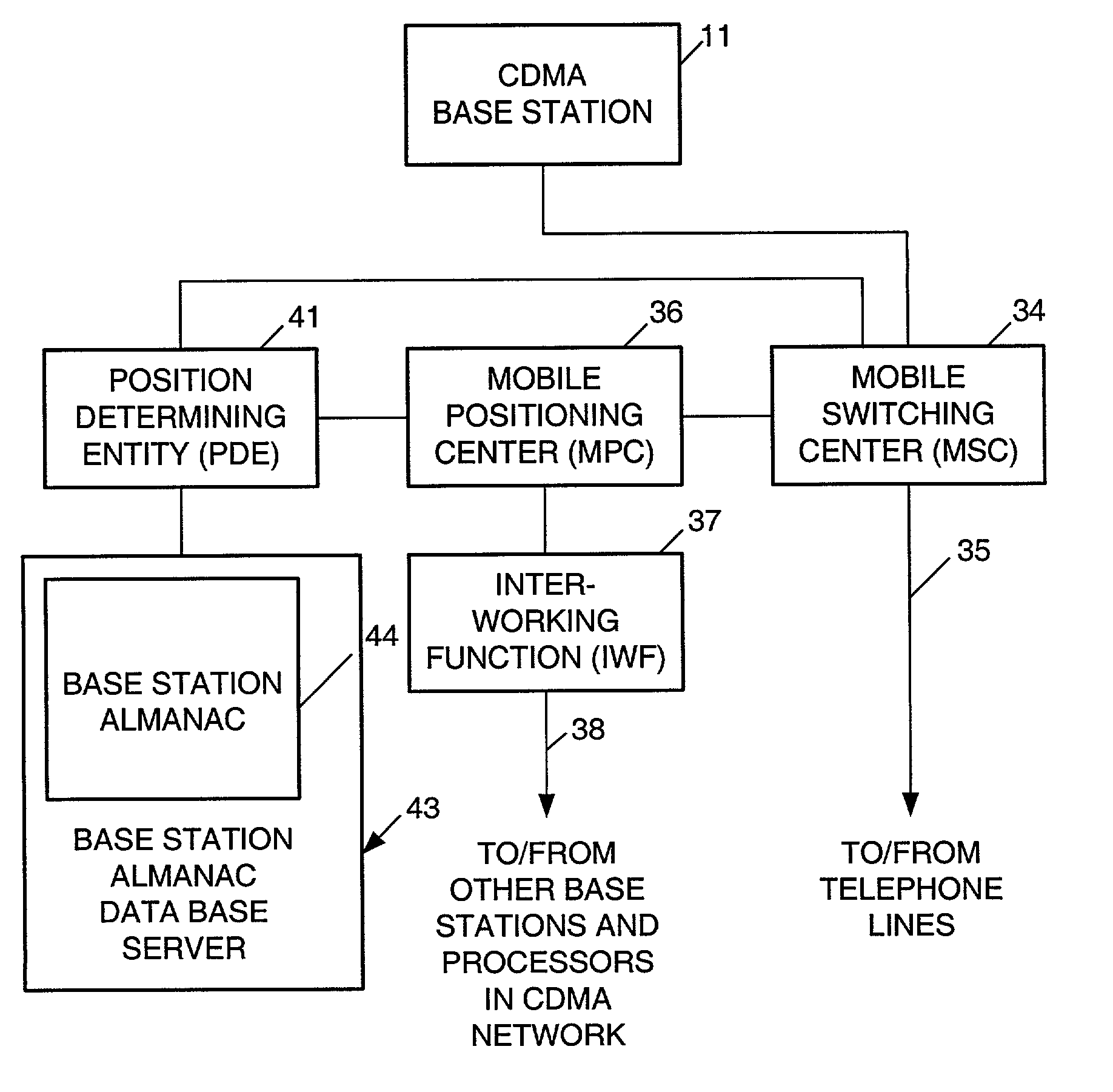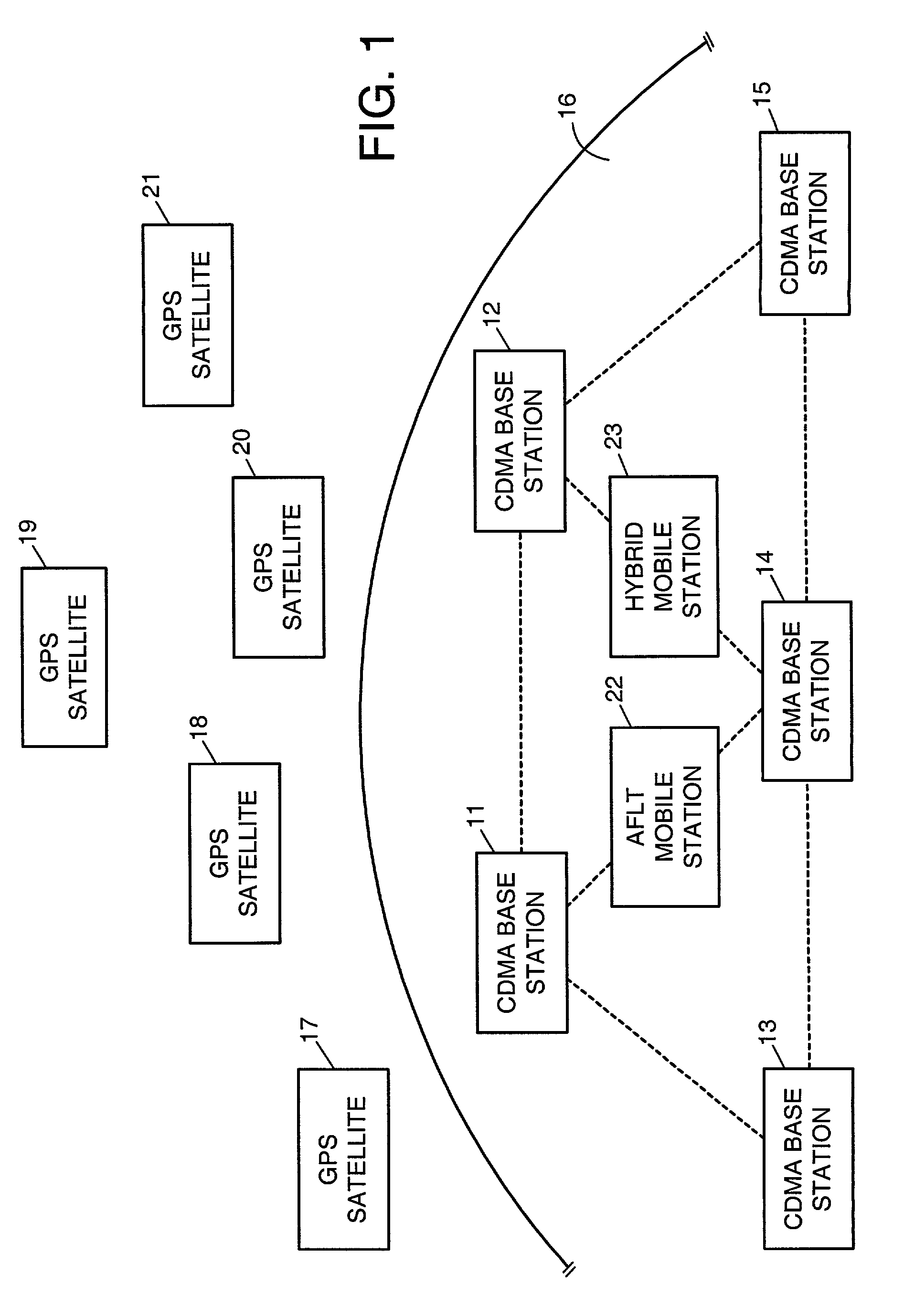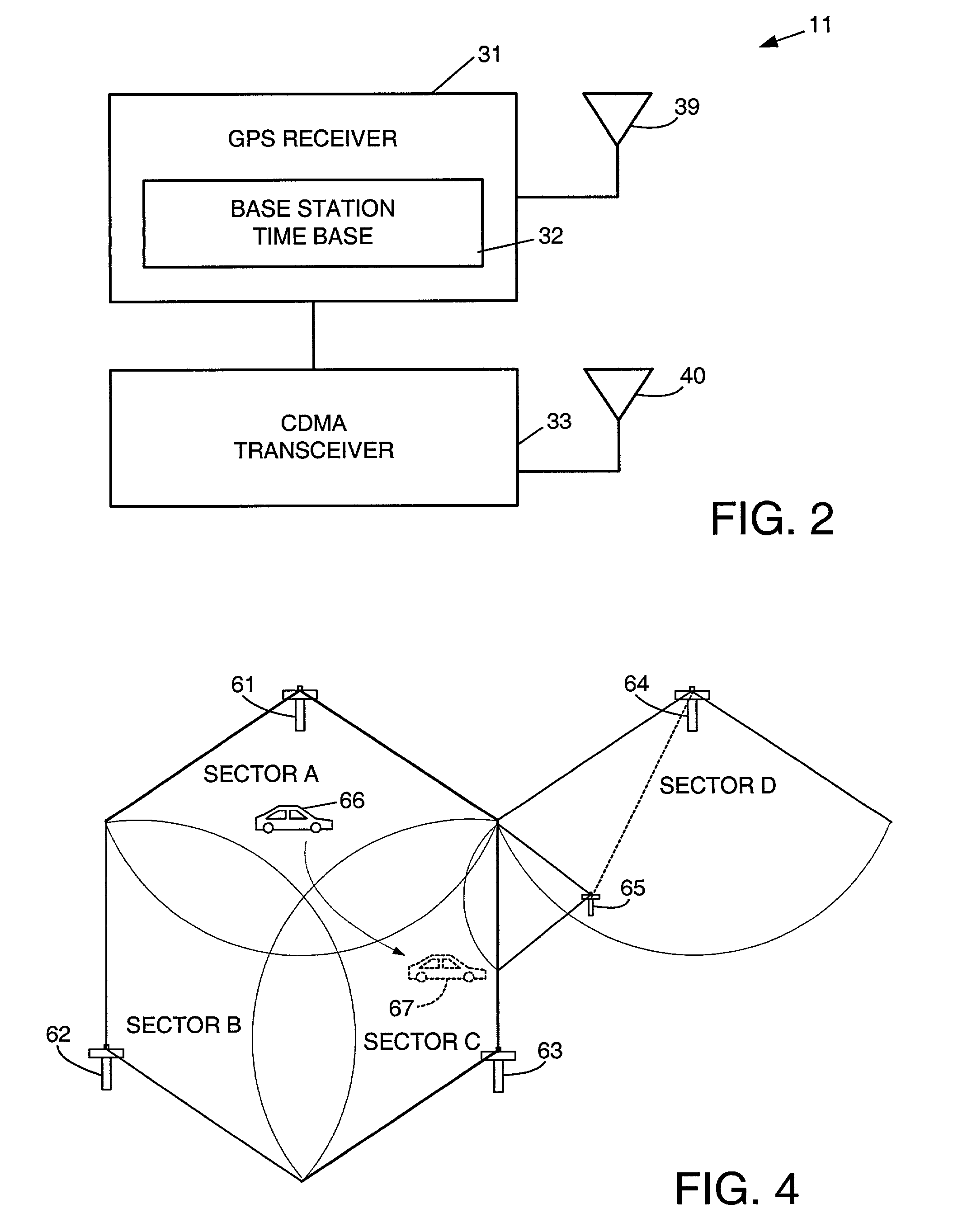Use of mobile stations for determination of base station location parameters in a wireless mobile communication system
a mobile station and wireless mobile communication technology, applied in the field of mobile communication, can solve the problems of human error, tedious and expensive acquisition of antenna location and timing information, and inability to accurately determine the position of the base station,
- Summary
- Abstract
- Description
- Claims
- Application Information
AI Technical Summary
Benefits of technology
Problems solved by technology
Method used
Image
Examples
Embodiment Construction
[0025]FIG. 1 shows a CDMA cellular telephone network using a GPS system for locating mobile telephone units and calibrating base stations. The invention will be described with reference to this example, but it should be appreciated that the invention is not limited to the use of CDMA or GPS. For example, the invention could be practiced in a Time Division Multiple Access (TDMA) cellular telephone network, and the invention could be used without the use of any kind of global satellite system for assisting position location.
[0026]In general, to practice the present invention with any kind of wireless communication network, such as a TDMA cellular telephone network, it is advisable to consult the applicable industry standards for specifications regarding compatible location services. For example, the TIA / EIA standard IS-801-1 2001, Position Determination Service Standard for Dual-Mode Spread Spectrum Systems, is especially adapted for a CDMA network using AFLT and GPS. The TIA / EIA stan...
PUM
 Login to View More
Login to View More Abstract
Description
Claims
Application Information
 Login to View More
Login to View More - R&D
- Intellectual Property
- Life Sciences
- Materials
- Tech Scout
- Unparalleled Data Quality
- Higher Quality Content
- 60% Fewer Hallucinations
Browse by: Latest US Patents, China's latest patents, Technical Efficacy Thesaurus, Application Domain, Technology Topic, Popular Technical Reports.
© 2025 PatSnap. All rights reserved.Legal|Privacy policy|Modern Slavery Act Transparency Statement|Sitemap|About US| Contact US: help@patsnap.com



